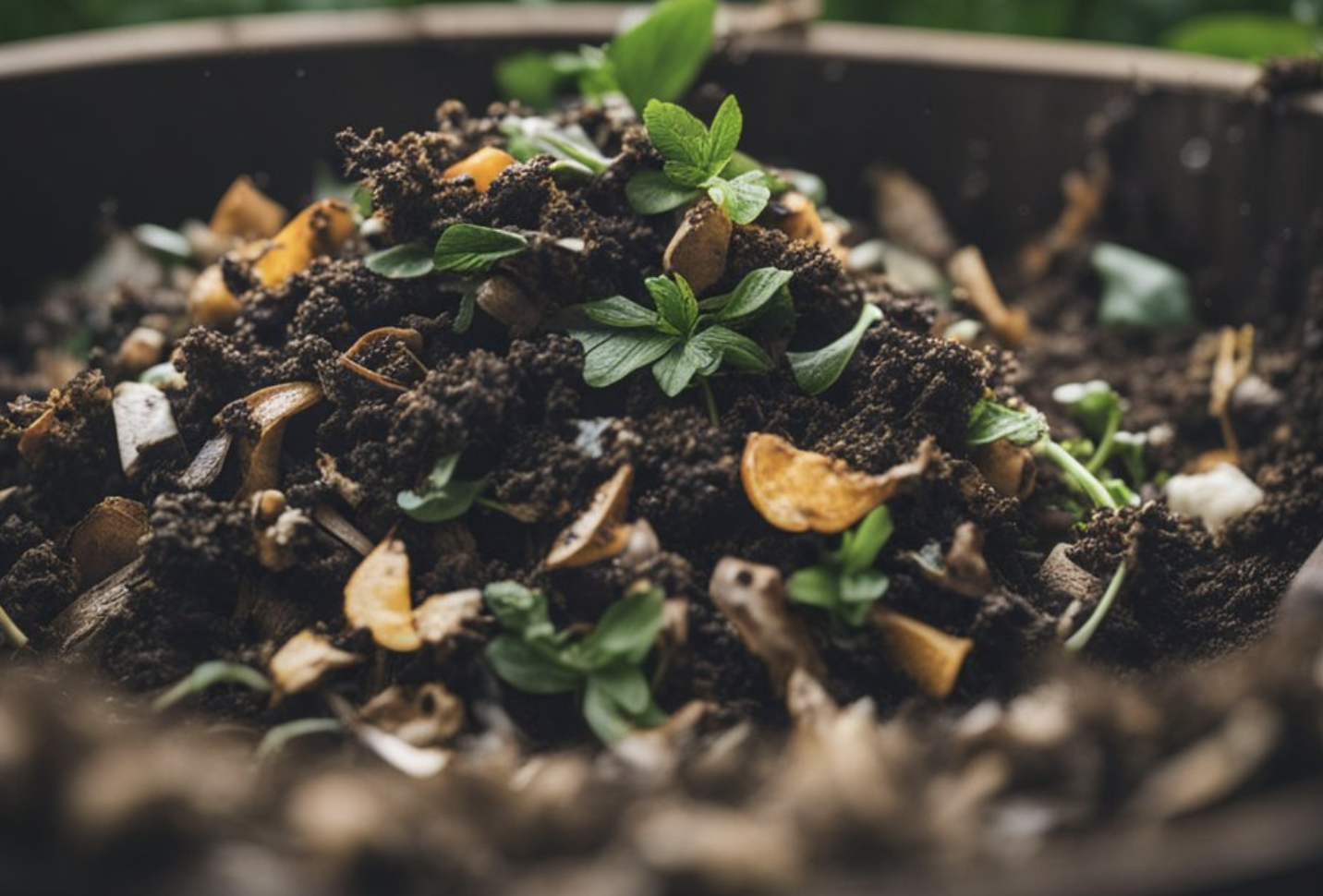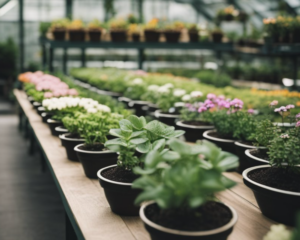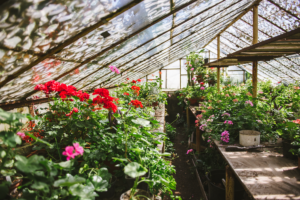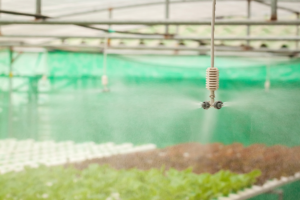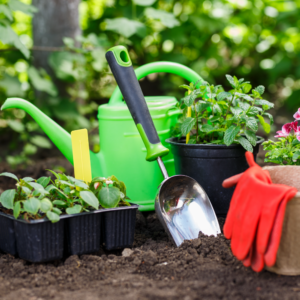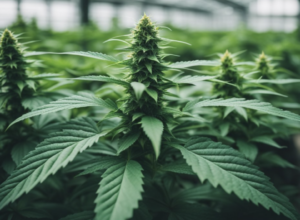Have you ever wondered if you could make your own fertilizer at home? It’s actually pretty easy, and it can save you money too. Homemade fertilizer can boost your garden’s soil health without the need for expensive store-bought products. Plus, you probably have most of the ingredients you need right in your kitchen.
I started making my own fertilizer a few years ago, and my garden has never been better. There are lots of benefits to using homemade fertilizer. For one, it’s less expensive. You can use things like coffee grounds, eggshells, and vegetable scraps. These items are usually thrown away, but they can be great for your plants.
Another big plus is knowing exactly what’s going into your soil. Store-bought fertilizers can have chemicals that aren’t good for your garden or the environment. With homemade fertilizer, you have complete control over what you’re feeding your plants. This makes it a win-win for both you and your garden.
Understanding Soil Fundamentals
Before you start making homemade fertilizer, it’s important to understand some basics about soil. You’ll need to think about soil pH, texture, structure, and the role of nutrients and microorganisms.
The Role of Soil pH
Soil pH measures how acidic or alkaline the soil is. A pH scale runs from 0 to 14, where 7 is neutral. Most plants prefer a pH between 6 to 7. If your soil is too acidic or too alkaline, plants won’t grow well. To know your soil’s pH, you can use a soil test kit. If your soil pH is off, you might need to add lime to raise it or sulfur to lower it.
Soil Texture and Structure
Soil texture refers to the mix of sand, silt, and clay. Sandy soil drains water quickly but doesn’t hold nutrients well. Clayey soil holds nutrients but drains poorly. Loamy soil is a balance of sand, silt, and clay, and it’s usually ideal for gardening. Structure refers to how soil particles clump together. Good structure allows roots to grow easily and water to drain well. Poor structure can make soil compact and hard for roots to penetrate.
Nutrient and Microorganism Interplay
Nutrients like nitrogen, phosphorus, and potassium are key for plant growth. Microorganisms in the soil help break down organic matter to release these nutrients. Healthy soil has billions of tiny organisms working together. Testing your soil can tell you if you need more nutrients. If microorganisms aren’t present in large numbers, your soil health might be poor. You can boost microorganism activity by adding compost or organic matter.
Understanding these soil basics will help your homemade fertilizer work effectively.
Key Components of Fertilizers
Fertilizers help plants grow by giving them the nutrients they need. Let’s break down the main components: macronutrients, secondary elements, and micronutrients.
Macronutrients: Nitrogen, Phosphorus, and Potassium
Macronutrients are crucial for plant health. Nitrogen (N) helps plants grow strong and green. It’s essential for leafy growth. Phosphorus (P) supports root development and flower production. It helps plants use and store energy. Potassium (K) improves overall plant health and disease resistance. It’s key for water regulation and enzyme activation.
Without these macronutrients, plants won’t thrive. A balance of nitrogen, phosphorus, and potassium is necessary for plant growth. They are usually listed on fertilizer labels as N-P-K.
Secondary Elements: Calcium, Magnesium, and Sulfur
Secondary elements are also important but needed in smaller amounts. Calcium (Ca) is vital for cell wall structure and stability. Think of it as the plant’s bones. Magnesium (Mg) is at the center of the chlorophyll molecule. It’s needed for photosynthesis, helping plants turn sunlight into energy.
Sulfur (S) is used to make proteins and enzymes. It helps form essential vitamins. While not needed in the same amounts as macronutrients, these elements are still crucial. Keeping the right levels of calcium, magnesium, and sulfur helps plants stay healthy and productive.
Micronutrients and Their Importance
Micronutrients are needed in tiny amounts, but they are still essential. These include elements like iron, zinc, copper, and manganese. Iron is important for chlorophyll production, giving plants their green color. Zinc helps with growth hormone production and enzyme function. Copper is vital for reproduction and root metabolism. Manganese assists in photosynthesis and nitrogen assimilation.
Even though micronutrients are needed in small doses, deficiencies can cause big problems. Ensuring that plants get these nutrients helps them grow and produce well. It’s like adding the final touches to a piece of art.
Creating Homemade Fertilizers

Let’s make some great homemade fertilizers! We’ll cover composting, using kitchen scraps, yard waste, liquid fertilizers, and some natural recipes that will help your garden thrive.
Composting Basics
Composting is an excellent way to recycle organic material into a rich soil amendment. I start with a mix of green and brown materials to create a balanced compost.
Green materials include grass clippings, coffee grounds, and food waste like banana peels. Brown materials are dry leaves, cardboard, and wood ash. Keeping these materials in layers helps maintain airflow, which is important for the microbes that break down the compost. Turn the compost pile every few weeks to speed up the process.
Ingredients for successful composting:
- Green materials: grass clippings, coffee grounds, banana peels.
- Brown materials: dry leaves, cardboard, wood ash.
Utilizing Kitchen Scraps
Don’t throw away those kitchen scraps! They can be turned into valuable fertilizer for your garden. Some of my favorites to use are eggshells, coffee grounds, and vegetable peels.
Eggshells provide calcium, which is essential for plant growth. Coffee grounds add nitrogen and improve soil structure. To use these scraps, simply crush the eggshells and sprinkle them around your plants or work them into the soil. Coffee grounds can be mixed directly into the soil or added to your compost pile.
Common kitchen scraps for fertilizer:
- Eggshells: add calcium.
- Coffee grounds: add nitrogen.
- Vegetable peels: rich in various nutrients.
Garden and Yard Waste Leveraging

Yard waste is another excellent source of materials for homemade fertilizer. Grass clippings, leaves, and small branches can all be used.
I like to run a lawnmower over fallen leaves to shred them, which helps them break down faster. Grass clippings can be left on the lawn to decompose or collected for composting. Be cautious with weeds, though, as some can regrow if not properly composted.
Key yard waste materials:
- Grass clippings: high in nitrogen.
- Leaves: break down into humus.
- Small branches: add structure to compost.
Making Liquid Fertilizers
Liquid fertilizers are a quick way to provide nutrients to your plants. One easy method is to create a “compost tea.”
To make compost tea, I fill a bucket with water and add a few shovelfuls of compost. Let it sit for a day or two, stirring occasionally. Strain the liquid and use it to water your plants, providing them with a nutrient boost. Seaweed soaked in water also makes an excellent liquid fertilizer, rich in trace minerals.
Quick liquid fertilizers:
- Compost tea: made from soaking compost in water.
- Seaweed fertilizer: soak seaweed in water for minerals.
Natural Fertilizer Recipes
Here are a few simple recipes for natural fertilizers that I use regularly:
- Banana Peel Fertilizer: Chop banana peels and bury them in the soil around your plants. They slowly release potassium, which helps with flower and fruit growth.
- Eggshell Powder: Dry and grind eggshells into a fine powder. Sprinkle it around your plants to add calcium.
- Coffee Ground Mix: Mix coffee grounds with some wood ash and sprinkle this mixture around your plants to improve soil structure and add nutrients.
These methods are easy and make good use of waste materials.
Recipes:
- Banana peel fertilizer: for potassium.
- Eggshell powder: for calcium.
- Coffee ground mix: improves soil structure.
Safety and Environmental Considerations
When making homemade fertilizer, it’s important to keep certain safety and environmental considerations in mind. This can ensure you don’t harm yourself, your plants, or the environment.
Avoiding Harmful Substances
Using harmful substances like salt or acid in homemade fertilizers can damage your soil and plants. Some kitchen scraps might contain these substances, so I check ingredients carefully.
For example, too much salt can dry out plants, and acid can lower soil pH too much. Harmful bacteria can also be a problem if you include meat or dairy in compost. To avoid this, I stick to vegetable peels, eggshells, and coffee grounds. Proper composting methods can help kill harmful bacteria before they reach your plants.
Organic vs. Synthetic Fertilizers
There’s a big difference between organic and synthetic fertilizers. Organic fertilizers, made from natural materials, support soil health by adding organic matter and essential nutrients. They break down slowly, providing a steady supply of nutrients. This is great for long-term soil health and reduces environmental impact.
Synthetic fertilizers are man-made and often act quickly. They’re good for a quick boost in plant growth, but they can harm soil health over time. They may also have a higher environmental impact because they’re made from non-renewable resources. I prefer organic fertilizers for my garden to keep it healthy and sustainable.
Optimizing Fertilizer Use
Using fertilizer correctly can make a big difference in how well your plants grow. Timing, soil testing, and proper storage are key factors in getting the best results.
When to Fertilize: Seasonal Tips
I’ve learned that spring is a great time to start fertilizing. As plants begin to grow, they need extra nutrients for a strong start. You can use a store-bought fertilizer or mix your own.
In summer, I keep an eye out for signs of nutrient deficiencies. A little boost of fertilizer can help plants stay healthy through the hot months.
Come fall, it’s good to give plants a last feed before winter. This helps them store energy for the colder season. Just avoid over-fertilizing, which can harm your plants.
Soil Testing and Adjustment
Testing your soil is super important. I usually grab a soil test kit from the garden center. This tells me the pH level and what nutrients are missing.
If my soil is too acidic or alkaline, I make adjustments. I might add lime to raise the pH or sulfur to lower it. Knowing the nutrient levels helps me decide what type of fertilizer to use.
Regular soil testing, at least once a year, keeps me informed about the condition of my garden. It’s like a health check-up for my plants.
Fertilizer Storage and Maintenance
Storing fertilizer properly is crucial. I keep mine in a cool, dry place, usually in a bucket with a tight lid. This prevents it from getting damp or clumping together.
I also label all my containers. Writing the type of fertilizer and the date I bought it on the bucket helps keep things organized.
Using tap water for mixing liquid fertilizers works fine for me. I just make sure to follow the instructions on the package to avoid over-diluting or over-concentrating. This way, my plants get just the right amount of nutrients without any waste.
Tailoring to Plant Needs
Different plants have unique needs, so it’s important to create a fertilizer mix that suits them. I’ll go over how to make fertilizers for specific types of plants, including acid-loving plants, vegetable gardens, and flowers and herbs.
Fertilizers for Acid-Loving Plants
Plants like blueberries, azaleas, and rhododendrons thrive in acidic soil. For these, add coffee grounds, pine needles, or peat moss to the soil. These materials lower the pH, making it more acidic.
When I make plant food for acid-loving plants, I mix coffee grounds with water to create a liquid feed. This liquid can be poured around the base of the plant once a month.
Using mulch, like pine needles, can also help maintain acidity. It adds organic matter and benefits soil structure. When adding these ingredients, remember not to overdo it, as too much acidity can harm plants.
Custom Blends for Vegetable Gardens
Vegetable gardens need a balanced mix of nutrients to thrive. I usually start with a base of compost, adding ingredients like bone meal, blood meal, and wood ash for extra nutrients.
Bone meal is rich in phosphorus, which is great for root development. Blood meal adds nitrogen, promoting leafy growth. Wood ash is a good source of potassium, important for overall plant health.
I apply this blend by mixing it into the soil before planting. Throughout the growing season, I also use compost tea as a liquid feed. This helps keep the plants healthy and productive, ensuring a bountiful harvest.
Specialized Formulas for Flowers and Herbs
Flowers and herbs have specific nutrient needs. For flowers, I use a mix that emphasizes phosphorus and potassium. Phosphorus promotes blooming, while potassium strengthens the plant.
For my herbs, I often use a lighter mix. Over-fertilizing herbs can lead to reduced flavor. I stick to a compost base, adding small amounts of fish emulsion or liquid seaweed.
Herbs also benefit from regular, light feeding. Once every two weeks works well, keeping the plants healthy without overwhelming them. For potted herbs, I use a diluted liquid feed to avoid buildup. This approach keeps my herbs flavorful and my flowers vibrant.
Innovative and Unconventional Ingredients
When it comes to homemade fertilizer, some unexpected ingredients can make a big difference. Let’s explore three main types that are unique and highly effective for plant growth.
Aquarium Water and Manure Teas
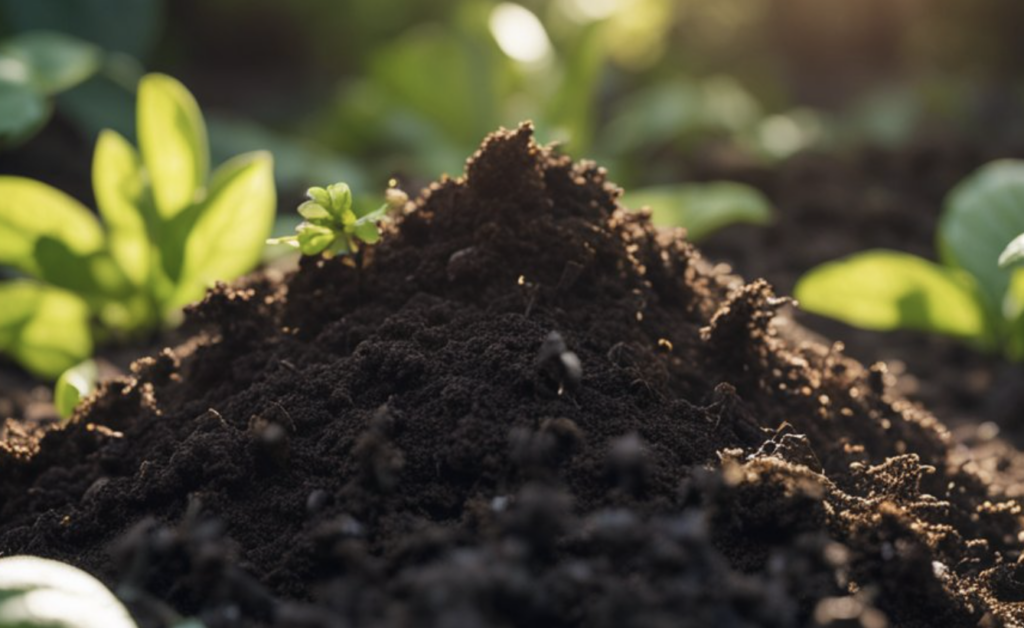
Aquarium water is a hidden gem for your garden. It’s filled with beneficial bacteria and nutrients. Whenever I clean my fish tank, I save the water to pour on my plants. It’s especially good because it’s a gentle fertilizer.
Manure tea is another fantastic option. Steeping animal manure in water for a few days creates a nutrient-rich liquid. I try to use cow or horse manure, but chicken and rabbit manure works too. Remember to dilute it before using to avoid burning your plants.
Exploring Stinging Nettle and Comfrey
Stinging nettle and comfrey aren’t just weeds; they’re goldmines for natural fertilizer. I’ve found that soaking these plants in water creates a powerful garden tonic. Nettle is packed with nitrogen, while comfrey brings potassium and phosphorus to the table.
I chop up the leaves and let them sit in a bucket of water for a couple of weeks. The resulting liquid is nutrient-rich and smells strong but works wonders for plant growth.
Experiments with Epsom Salts and Vinegar
Epsom salts contain magnesium, which is vital for plant health. I often mix Epsom salts with water to give my plants a quick boost. It’s especially useful for tomatoes and peppers.
Vinegar might sound odd, but a little can lower soil pH. I add a tablespoon to a gallon of water to make an acidic solution. This is great for acid-loving plants like blueberries and azaleas. Be careful not to overdo it, though, as too much can harm plants.
These unusual ingredients can provide your garden with a variety of nutrients, all while being easy to source.
Conclusion
I’ve found making homemade fertilizer is pretty simple and rewarding. It’s great to see my plants thrive with stuff I can make at home.
Benefits:
- Saves money
- Reduces waste
- Environmentally friendly
Ingredients:
- Kitchen scraps
- Coffee grounds
- Eggshells
It’s easy to get started. I just collect food scraps and store them in a compost bin. Mixing in items like coffee grounds and eggshells helps.
Steps I Follow:
- Collect materials daily.
- Store in a compost bin.
- Turn the compost to mix it up.
Using homemade fertilizer has helped my garden a lot. My plants look healthier and grow better. It’s also satisfying to know that I’m reusing waste instead of just throwing it away.
Plus, it’s fun experimenting with different materials to see what works best. Everyone’s garden is different, so feel free to tweak the ingredients.

